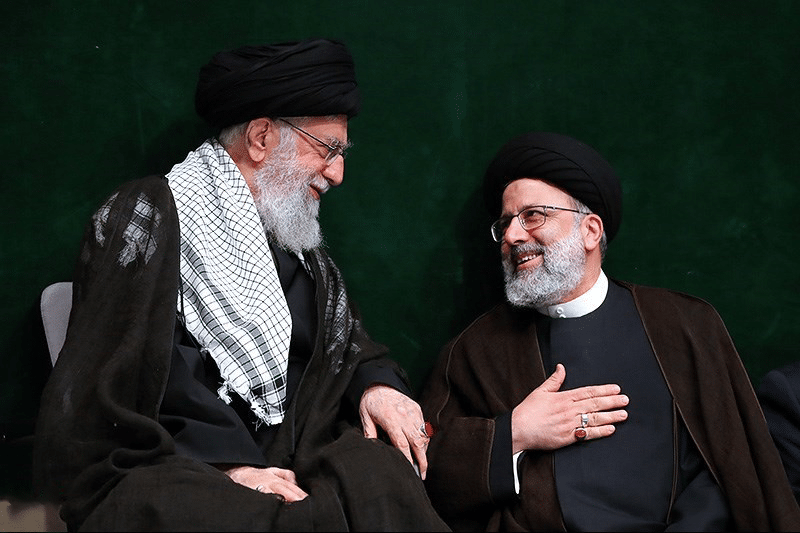Iranian President Ebrahim Raisi R is considered close to Supreme Leader Ali Khamenei (L) . Raisi was one of the four people on the prosecution committee, which was responsible for the execution of thousands of political prisoners in Iran in 1988 and is hence labeled the “death committee” by the government’s opponents and some in the Western media. Raisi was nicknamed: ” The Butcher of Tehran”
Amid a regional war, a fight at home between the clerics and military looms
THREE YEARS ago, when Ebrahim Raisi won the presidency in a rigged election, some Iranians thought it was a stepping stone to a bigger position. Ali Khamenei, the aging, ailing supreme leader, did not have long to live; when he dies, Mr Raisi would surely aim to replace him. But history has a sense of irony. Instead of catapulting him to the top job, winning the presidency may have cost Mr Raisi his life.
On May 19th he was returning from a visit to neighboring Azerbaijan, where he inaugurated a dam on the border. Authorities lost contact with his helicopter in a mountainous region about 95km (60 miles) northeast of Tabriz (see map). At first they insisted there was no cause for alarm: the president’s helicopter had made a “hard landing”, although, confusingly, several Iranian news agencies reported that he traveled onwards to Tabriz by car. Within hours, though, those reports had been deleted, and state television began to broadcast prayers for the president. Almost half a day after the crash Mr Raisi was still missing, in a remote area with overnight temperatures in the low single digits. It seems increasingly likely that Iran’s president is dead, along with the foreign minister, Hossein Amirabdollahian, who was traveling in the same helicopter.
THE ECONOMIST


Leave a Reply
You must be logged in to post a comment.